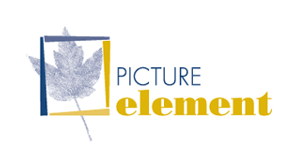|
Picture Element is one of the few companies including the Vatican Secret Archives, the Beethoven Museum in Germany, Nasa's Johnson Space Center in Houston, and the Pentagon, that uses this high-end scanner.
What are the advantages of Picture Element's Cruse Synchron Table (ST) scanner over digital camera scan backs, digital CCDs, and studio lights?
Answer:
While today's digital ccd cameras and scanning backs are capable of capturing images, they pale in comparison to the Cruse Synchron table scanner. The Synchron Table model is the newest improvement from Cruse's already great Synchron light model. The Cruse Synchron table scanner offers the following significant advantages:
Light and table: The patented synchron table system enables it to be predictable and repeatable under different scanning modes and lighting conditions. This enables us to create accurate colorsync profiles and obtain the purest, most accurate large format scan anywhere. This keeps any additional Photoshop adjustments to a minimum, which better preserves the digital file's integrity for higher quality output. Quality output starts with a quality scan.
Focus: When using a digital camera back, focus can only be set visually on the camera's ground glass. Focus may look good in the viewfinder but still not be optimized for the camera back's CCD sensors.
The Cruse scanner uses state-of-the-art computerized focusing rather than ground glass and a focus knob. The complete elimination of human error guarantees maximum sharpness on all scans. While rarely required, focus can still be customized by the scanner operator for any special requirements. Since the table moves the artwork underneath the stationary scanning head and lights, we're able to obtain tack sharp detail corner to corner even on the biggest pieces. The scanner is huge, weighing nearly a ton, and we've captured originals up to 5x9 feet in size!
Lighting: Illuminating a subject evenly using portable lighting is extremely difficult if not impossible. As a result, camera scans must often be digitally retouched, requiring additional time, money, and proofing procedures. Costly digital retouching also contributes to the degradation of files of these lesser quality capturing systems.
Picture Element's Cruse scanner uses a patented Synchron™ lighting system, which provides even illumination across the entire surface of the original, while subjecting it to far less light exposure than other methods of illumination. This allows us to use smaller lens apertures for maximum sharpness, while eliminating any glare points or lighting inadequacies.
Lighting is also adjustable. The artwork moves closely beneath the light source and can be setup in several different configurations. The various "textured" modes used to cast shadows better replicate thick paint strokes and canvas textures than any other copy system around. Some textured copies look so real, it's hard to tell them from the original.
Precision Color: Because the various lighting modes are calibrated and predictable, exact colorsync profiles are made for each, ensuring the best color and exposure right from the raw scan.
Image Resolution: Our Cruse scanner is able to capture up to to 1.1 gigabytes of data in 24-bit RGB, or 2.2 gigabytes at 48bit RGB. at 48x72" area in a single pass . Larger originals and scan sizes are possible in 2 passes, while smaller prints can be scanned in one pass up to 830dpi. This makes it possible for larger reproductions from smaller originals. We usually scan in 48bit high bit-depth color mode and offer many file formats and configurations for scans. Go to pricing and dpi capabilities...
Lens Resolution: Pixels on most digital camera backs are 8 microns apart, and most standard lenses will not resolve anywhere that small. As a result, data is not accurately placed on each pixel, consequently lowering the resolution of the scan.
Lenses used in Cruse scanners are ultra high resolution and are specially commissioned from Schneider/Kreuznach to address the scanner's unique needs and high resolve down to 5 microns surpassing ordinary copy/photography lenses.
Squareness of Camera to Subject: When using a tripod setup, it is impossible to "square" a digital camera perfectly to a wall-mounted subject. As a result, the out of square scan can be difficult to stitch or make square, and sharpness across the entire original is compromised. The Cruse scanner uses a unique method of mounting the camera to a precision perpendicular scanning bed. The camera and scanning head remain stationary, while the perpendicular table moves underneath the lens and light source. This enables the sensor to remain still and undisturbed by mechanical movements, providing exact, consistent corner to corner sharpness from large originals.
Squareness of the Digital Back: During the three-year development of the Cruse scanner, all available digital camera backs were tested for inclusion in the system. None tested were found to be perfectly square; one or more corners were out of focus. The Cruse Company was forced to develop its own precise scan head to meet its stringent requirements.
Multiple Uses: The scanner's unique design enable it to digitally capture mounted and framed artwork (through glass if needed) up to several inches thick. It is also ideal for rare documents, books, blue prints, maps, clothing, artifacts, circuit boards, etc.
Conclusion:
The Cruse scanner offers the same, repeatable even lighting, consistent color, and sharp focus over a variety of scanning modes. The Cruse Synchron table scans are in a class by themselves with no substitute.
Cruse Scan Pricing and dpi capabilities...
|


